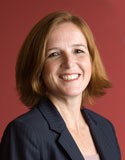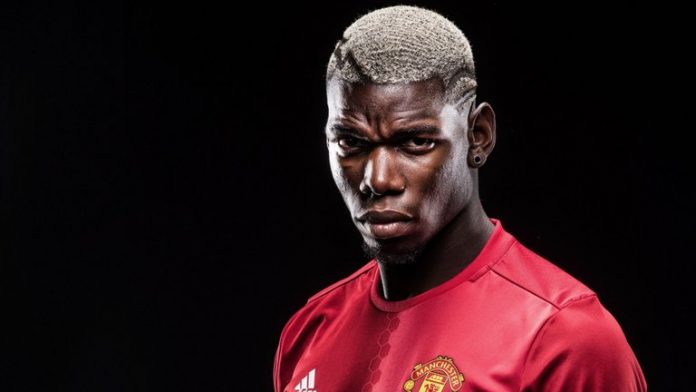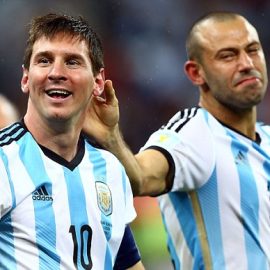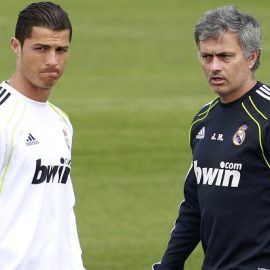The Women’s Professional Soccer league kicks off its inaugural season in April 2009. WPS teams will be based in Boston, Chicago, Dallas, Los Angeles, New Jersey/New York, St. Louis, and Washington, D.C. The league will expand to eight teams by 2010 with the inclusion of Philadelphia. Currently, the WPS teams are working on building their rosters through an allocation of U.S. Women’s National Team stars, a draft of international players, combines, additional League drafts and local team tryouts.
Soccerlens got the opportunity to talk to Tonya Antonucci, the CEO of Women’s Professional Soccer, about the new WPS league and the work that’s going on behind the scenes to get everything ready for April 2009.
Among the topics discussed with Tonya Antonucci were:
- How WPS is structured as compared with the now defunct WUSA
- The involvement of US Women’s National Team stars in the development of the new league
- How Mia Hamm’s silhouette was selected to be part of the WPS logo
- The level of cooperation between WPS and MLS
- The development of grassroots efforts to support woman’s soccer in the USA
- Much much more as well!
Interview Audio:
[audio:sl-podcast-0-us.mp3]Interview Transcript:
Kartik Krishnaiyer: Tonya Antonucci joins us, and my first question to you about Women’s Professional Soccer is, we hear a lot of concerns about the new professional league because of the failure of the WUSA a few years back. How exactly is Women’s Professional Soccer going to be structured differently than the WUSA?

I think all fans who are familiar with WUSA as a brand recognize that clearly it had most of the best female soccer players in the world playing here on American turf and through the great soccer product. When we look at that we felt like, you know, gee, we want to replicate that in WPS and we want to make sure that we build a model that allows us to attract the top talent pick; to entertain the fans and to develop the game here in the States on the women’s side. So, most of our focus was really on the business side and the main lessons learned were around cost containment.
Previously the WUSA had an exuberance about how quickly the league could grow and how much support it could gain in the first couple years. And it took those, sort of, all the revenue projections that would go along with exuberance and spent to match, really just sort of spent in the line with the support that…. And when it didn’t happen, then, didn’t come through in the early years, the lesson was learned that we have to have a more conservative, cost-contained approach that allows us to grow over time and not to just burn through cash.
The exuberance was understandable, right, ’99 Women’s World Cup, 14.3 rating on ABC, the US women’s team was the darling of America and casual sports fans and they were all in the red white and blue. Translating that into a league that’s in its infancy where the US team is dispersed over multiple cities and teams and they’re not wearing the red white and blue and you’ve got to build individual team brands and you’ve got to work to create relationships with fans one team at a time – it’s understandable that there was a disconnect there.
We’re taking the approach of, whether it’s an Olympics year or World Cup year, or whether those events are not even happening, we’re going to develop the game and create a strong offering for fans at the professional level for a league and teams that fans can get passionate about. Really start more conservatively and more grassroots to achieve that goal.
KK: To what extent have you learned lessons from Major League Soccer? They’ve had some of the same frustrations coming off the ’94 World Cup just like WUSA came off the ’99 World Cup triumph of the women’s national team. To kind of learn a grassroots approach and building team brand names, which I think was frustrating in a long term project for MLS, but it seems now, in year 13 of that league, to have really paid dividends.
TA: Yeah, and I think we’re benefiting from the hard work of MLS and the dividends that they’re now in a position to enjoy. And of course, a lot of that is in relation to the authentic soccer stadiums that have been built and continue to be built around the country for fans.
For the ownership groups to control their costs and own their revenues, it just makes for a better business model which we are finding. MLS is a partner of ours and we have people who are vested in our success and MLS is one of them. So, at the league level, MLS and WPS are partners in selling corporate sponsorships to corporate America for our league, WPS. And then team by team and city by city, in a number of our WPS cities, we are either playing at a soccer-specific stadium built through MLS ownership or we have an MLS owner who owns our team or there’s some sort of strategic partnership around the stadium, whether that be operational partnership in staffing and resources and gameday operations. The things of that nature would just help us manage our costs, be a little more efficient and a little craftier in how we keep the costs contained and managed in this business so we can make sure, and this is most important to the fans — and us as well — that this league is around for the future, that it’s sustainable and that fans can count on it for years to come.
We know that we get, really, one more shot at this in this country in terms of women’s professional soccer, and we have to get it right. We feel enormous pressure to get it right because people have the memory of WUSA and it leaving so we want to make sure we create as many partnerships as we can to ensure our success.
KK: To what extent does the success of a generation of footballers – young women that were inspired by the ’99 World Cup triumph and again the 2003 Women’s World Cup – to what extent does that build into building your brand? Because maybe it was too soon for the WUSA, and as you said, they were exuberant in some of their cost projections and revenue projections and I think in hindsight we all realize that. But, it seems that the timing for your new league is perfect if you think about the momentum among the young people that was captured in ’99 and those people coming to fruition as real football/soccer fans now in this country.
TA: Yeah, I have two answers there. First, I think you’re absolutely right that, when you study the research about growth from participation in women’s football, women’s soccer, girls soccer, since the time of WUSA and the years since, it’s only grown year over year. More and more girls, more and more women and adults are all playing the game and are passionate about it and there’s a whole new generation of players who are fantastically talented, who are just itching at a chance to play pro ball, and we’re going to be able to build those brands.
You think of the stars of WUSA and stars of national teams, whether those go back all the way to Michelle Akers and Shannon Higgins and Laurie Henrys and the Amy Allmans and the names could go on and on to the Mias and the Julies and the Brandis etc., into this next generation, there’s a whole new crop of players and the level of play is outstanding. So people in the soccer community know that there are some exciting new personalities and new soccer talent to honor. But I will say I think that if WUSA had had a more realistic business plan, I think it was a great opportunity to showcase the stars that were coming out of that ’99 World Cup and I think it was just unfortunate. They had a chance and it’s unfortunate that it didn’t work out. I think we’re all saddened by that.
You look at names like Mia, who is the Jerry West of our logo for the WPS – that is Mia in our logo – that is a way for her to honor and continue the legacy and stay involved in the sport at the professional level and you’re going to see, whether it’s Mia or Julie or Brandi – who has intentions to continue playing, bless her heart, and play in a pro league — Kristine Lilly intends to come back. I think you’re going to see a spectrum of those great athletes either endorsing our league, working for its success, or being a part of it directly. That’s an important thing too, for the legacy of the game.
KK: You brought it up before I was able to, but I wanted to ask you about the logo with Mia Hamm’s silhouette on the logo just like Jerry West is for the NBA. What was the decision making process to settle on that as your logo? And, in addition, you mentioned Kristine Lilly and Brandi Chastain potentially coming back and playing in this league. How much ownership do you think members of not only the ’99 Women’s World Cup Championship winning team, but other former US internationals feel towards this new professional league?
TA: Yeah, well, I’ll take your first question. We were kind of playing around with logos and looking at designs, we had multiple committees and stakeholders and fans who were involved, we had some focus groups and surveys. As we went through the process, we really just realized, you know, who would best epitomize this brand? And if you remember from the WUSA days, it was a sort of nondescript, maybe 13 year old girl with ponytail, who was very young and very aspirational and she was participating. We said we want this brand to stand for the best in the game, the best in the world and strong, accomplished, competitive women. Who better to be our icon of that than Mia? And once we came to that realization, we called her, she was thrilled, loved the idea, and she got right on board. So that was a lot of fun.
Some of the major well-known household names, stars of past US National teams, are really invested in this. We get calls from, let me give you some examples, people like Danielle Fotopolous, Cindy Parlow, Danielle Slaton, and other names where they aren’t necessarily in a position to play again when the league comes back but they want to be involved, they want to help, they have ideas. Then you have direct participation coming from Mia. Julie Foudy was instrumental in helping us get started and finding investors for the new league. Kristine and Brandi want to step back out on the field, and there are others who want to step back on the field as well. We’ve heard from Tiffany Milbrett that she’s interested and I think you’ll see more and more people, as they realize that this is real.
You go from the talking about it stage — we’ve tried to manage expectations because we know how sensitive the fans are to what happened before so we’ve tried to stay quiet, which is hard, but again, managing expectations until we really have concrete evidence that we’re real. That time is now. We’re preparing to put players on teams and allocation and drafts and we have our ownership in place, we’re working on it so we’re fully capitalized now, the money’s in and it’s been in for a while, so I think now the fans can really start to get excited about who’s going to come back, who’s going to give it a try? Kristine is just a wonderful example of someone who obviously moved on in her life. She’s having a family, and she’s had to take a break from the national team, but it’s important enough to her, to her legacy and to the future girls who will play the sport that she wants to come back, and it’s great.
KK: So you’ll begin with 7 teams or 8 teams next year? I know Philadelphia is going to come into the league when that stadium’s done, which should be the year after, but are you….
TA: Yes, Philly will come in in 2010 and they’re working through… the discussions are just going great with the MLS Philly ownership group. That new stadium to your point, that’s where they’ll play in 1010. Again, a partnership around other aspects of operational efficiencies and sharing costs with that MLS team. It’s really shaping up to be a model partnership, which we really love. They’ll come on board in 2010.
We’ll launch in 2009 with 7 teams. We are giving ourselves another month or so, we’re trying to sneak in maybe one more team as a team for 2009. We’re really focusing on the West Coast, particularly San Diego and the Bay area. It adds a national footprint balance for us, it helps reduce travel costs, and there’s this big gaping hole on the West Coast right now with LA out on its own. So we’re really trying to see if we can… we’re talking to a lot of potential investors and a number of people have made verbal commitments to us, so we’re just trying to get the rest of the way there. We hope, and if it won’t be 2009, then we’ll get it done for 2010.
KK: Great. And the final question I have for you is, your website, I’ve found to be much more informative in the months leading up to the launch of the league, and even leading up to the Olympic team selection and Women’s World Cup last year than the WUSA’s website had been in the period of time that the league existed. Is there some sort of web-based program your league is trying in order to attract fans, or is that just a coincidence that your website is that much more informative?
TA: Well, I appreciate the compliment, and we know it can be a heck of a lot better. We actually don’t feel that we’re meeting our own goals and expectations with the website, so I think fans should expect a heck of a lot more out of us. We’re planning a relaunch of the site this fall, adding a lot more functionality and features and again, the real big launch of the site will be when the games begin in April next year.
Just a quick second on my background, I was at Yahoo for 7.5 years before I started this project, relaunching or launching WPS. So my background is in the internet, and it’s a passion area for me just with Yahoo sports and Yahoo fantasy sports areas where I focused when I was at Yahoo and properties that I was involved in building.
I think to me, the internet is absolutely home-based, where our fans are interacting, where they will follow our league to your point, a great source of information and just exciting experience, an extension of the game on the field. I think we’ve got a real focus within our organization to really harness and maximize what that can be for fans. I think fans should keep tuning in because we plan to bring more and more interesting things out to them as we approach launch in April.
KK: Fabulous. Tonya Antonucci, the CEO of Women’s Professional Soccer, our new women’s professional league here in the United States, it’s a sanctioned first division, it’s the top of the women’s professional soccer pyramid. Thank you so much for joining us.
TA: Thank you for the time, I appreciate it.
The WPS kicks off in April 2009 – to learn more, please visit their website.
Add Sportslens to your Google News Feed!





